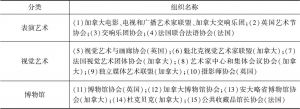报告
危机时期的“超级创意”:作为创造力驱动的文化工作者、艺术家与集体行动
摘要
本文聚焦创意群体中的超级创意类工作者,指出经济危机对创意(在这里指超级创意)工作者的影响微乎其微,甚至可以说创意工作者对经济危机是免疫的。那么为何创意工作者具备如此特殊的能力呢?答案非常简单且显而易见,创意工人和创意阶层通常是经济增长的推动力,他们代表当下生产方式和资本主义的核心。本文阐述了艺术文化界的超级创意是如何避免受到经济衰退影响的。此外,本文还阐述了近期经济衰退所导致的艺术文化组织等新的集体行为的兴起。对艺术家和许多文化工作者来说,这场危机只会带来轻微的扰动。艺术家是证明当下知识社会中劳动力和工作组织状态的最好例证。除了危机带来的更多明显的负面影响,经济动荡也促进了新口号的出现和网络化学习等新的实践行为的兴起,从而为集体行动和工作组织应对危机提出了一些创造性的建议。
参考文献 查看全部 ↓
检索正文关键字
报告目录
- 一 前言
- 二 艺术文化背景下的“超级创意”:从行业到当代资本主义先锋
- 三 艺术家与创新精神:从去工业化理论到资本主义的新形势
-
四 “阅读”危机
- 1.对危机的看法
- 2.就业与文化参与
- 3.文化产业的经济活力
- (1)源于危机的创造力:艺术文化协会中的网络化学习与创意
- (2)网络化学习:智力、策略和分享文化
- (3)群体行动中的创新:去中心化的宣传推介
- 五 结语
查看更多>>>


